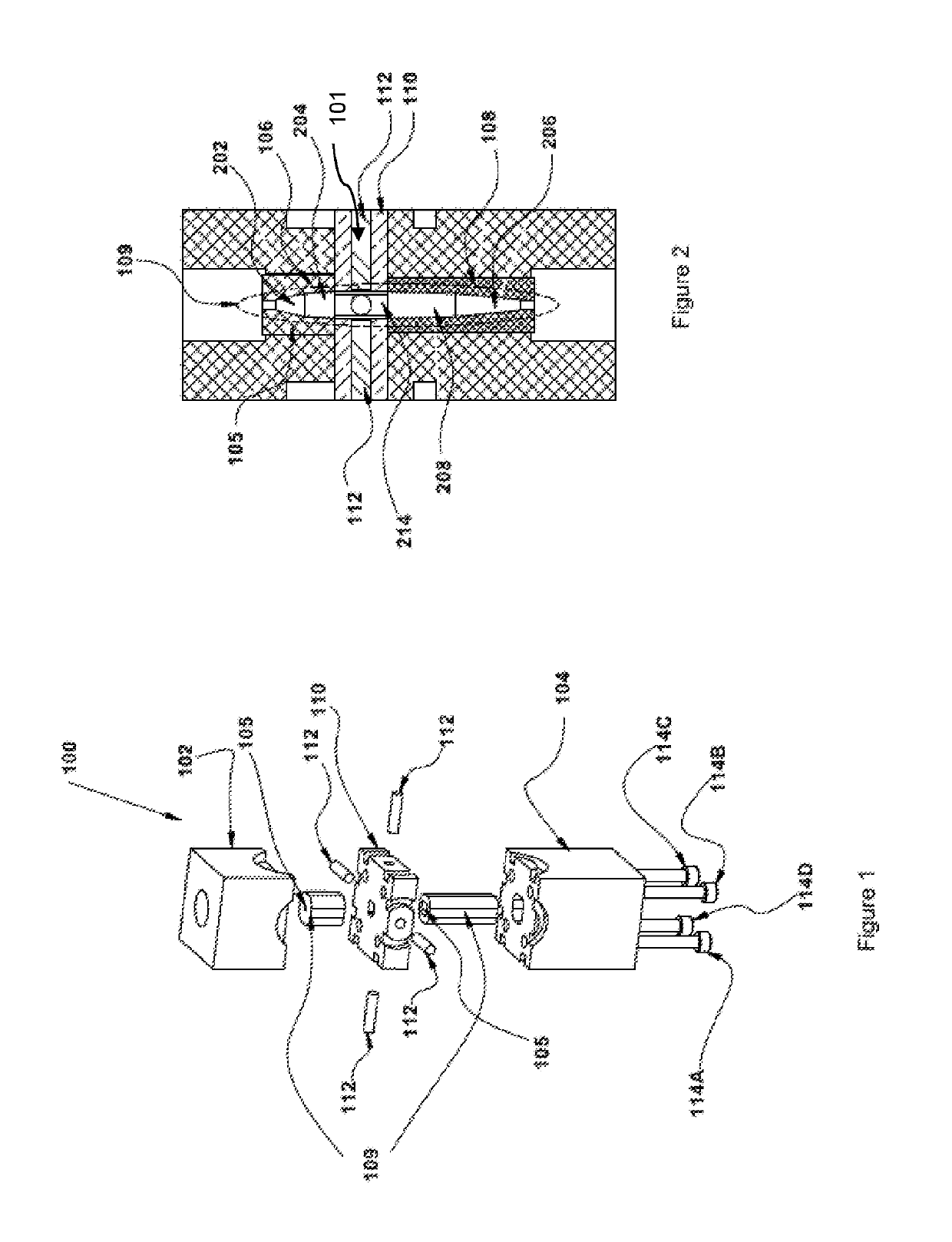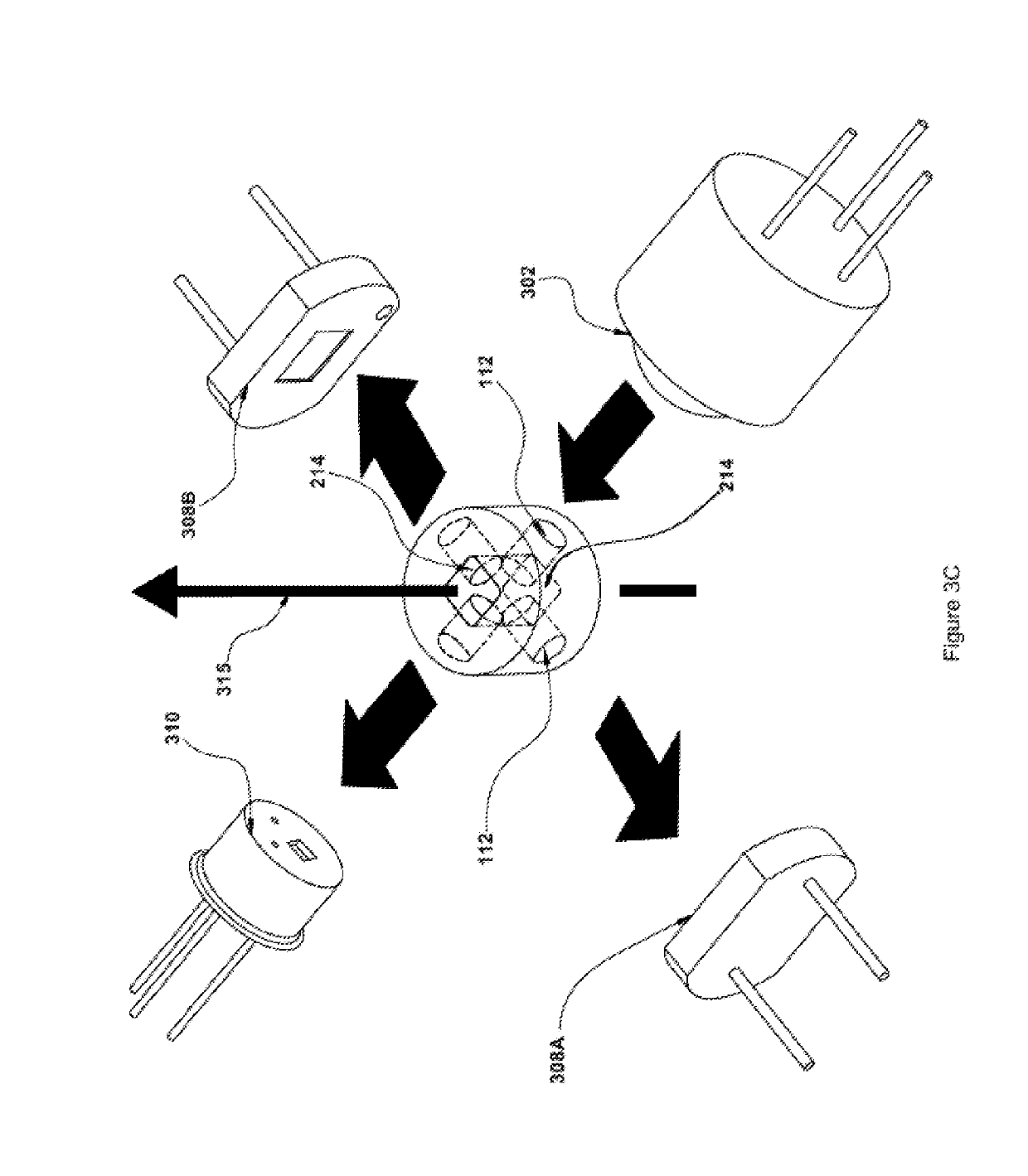Flow cell and system for simultaneous measurement of absorbance and emission in a sample
- Summary
- Abstract
- Description
- Claims
- Application Information
AI Technical Summary
Benefits of technology
Problems solved by technology
Method used
Image
Examples
second embodiment
[0072]FIG. 5A is an exploded view and FIG. 5B is a perspective view of a flow cell apparatus 500 incorporating the flow cell 100 of FIG. 1 and having two light inputs and two light outputs, as well as two photodiodes for fluorescence measurement, thereby facilitating two simultaneous light absorption measurements and fluorescence emission, according to the present application. The flow cell apparatus 500 may permit two UV absorbance measurements, one UV absorbance measurement and one visible light measurement or two visible light wavelengths, as well as one or two emission wavelengths.
[0073]With the flow cell apparatus 500, one or more different wavelengths of excitation light may be transmitted into the central chamber 214 through the light input face using appropriate light sources, fiber optic bundles and / or light filters.
[0074]As well, with the flow cell apparatus 500, one or more different wavelengths of absorbed light may be measured independently and simultaneously at the abs...
third embodiment
[0081]FIG. 8A is an exploded view and FIG. 8B is an enlarged perspective view of a three input module 800 for use with a flow cell 100, according to the present application. The three input module 800 of the may receive as inputs three UV wavelengths (e.g. 3 UV), three visible light wavelengths (e.g. 3 VIS), two UV wavelengths and one visible light wavelength or vice versa (e.g. 2 UV and 1 VIS or 1 UV and 2 VIS). As shown in FIG. 8, there are three input light sources 802A, 802B, 802C (e.g. LEDs), each of which focus their light beams on trifurcated fiber optic bundles (e.g. separate input arms) 808A, 808B, 808C that join with the combined fiber optic light pipe 810. The separate input arms of the fiber optic bundles 808A, 808B, 808C meet and the light they carry is mixed in the single bundle 810, so that they provide even illumination to the fiber optic light pipe 112 (e.g. quartz light rod) that carries the light beam into the flow cell's 214 central core. The input light sources ...
PUM
 Login to View More
Login to View More Abstract
Description
Claims
Application Information
 Login to View More
Login to View More - R&D
- Intellectual Property
- Life Sciences
- Materials
- Tech Scout
- Unparalleled Data Quality
- Higher Quality Content
- 60% Fewer Hallucinations
Browse by: Latest US Patents, China's latest patents, Technical Efficacy Thesaurus, Application Domain, Technology Topic, Popular Technical Reports.
© 2025 PatSnap. All rights reserved.Legal|Privacy policy|Modern Slavery Act Transparency Statement|Sitemap|About US| Contact US: help@patsnap.com



